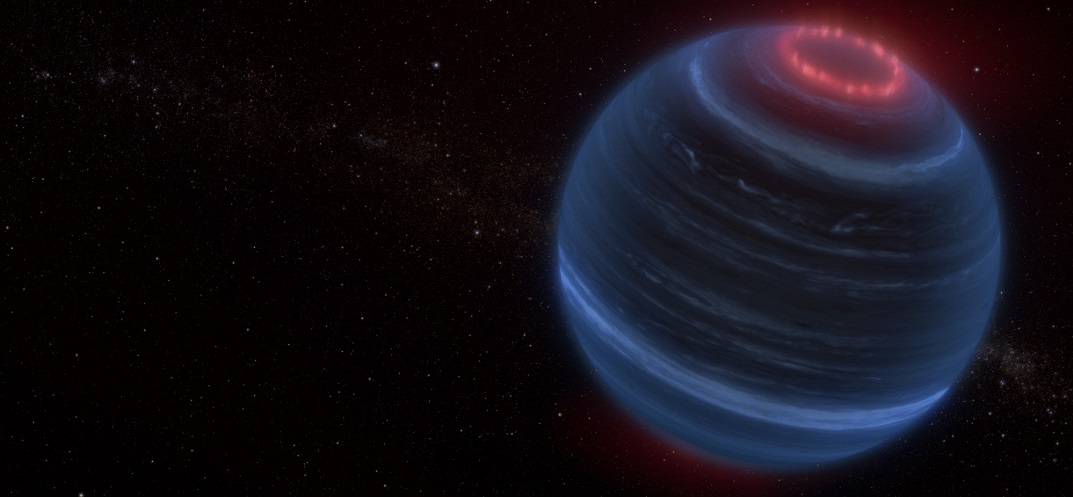Herts astronomers make remarkable new discovery using James Webb Telescope

As part of an international team using NASA’s James Webb Space Telescope, University of Hertfordshire astronomers have helped to discover a brown dwarf (a celestial object more massive than Jupiter but smaller than a star) exhibiting an unusual infrared emission from methane resembling an aurora.
While methane in emission is a feature observed in gas giants like Jupiter and Saturn, the discovery is unexpected because the brown dwarf, known as W1935, is cold and lacks a host star. This means it has no obvious source for the heating of its upper atmosphere usually needed to power an emission.
On Earth, aurorae are created when energetic particles blown into space from the Sun are captured by the planet’s magnetic field. They cascade down into our atmosphere along magnetic field lines near Earth’s poles, colliding with gas molecules and creating eerie, dancing curtains of light.
Jupiter and Saturn have similar auroral processes that involve interacting with the solar wind, but they also get auroral contributions from active moons like Io (Jupiter) and Enceladus (Saturn). For isolated brown dwarfs like W1935, the absence of a stellar wind to contribute to the auroral process, and explain the extra energy in the upper atmosphere required for the methane emission, creates a mystery.
The astronomers behind the discovery have speculated that a nearby active moon may help account for the emission, or possibly interaction with interstellar plasma.
While aurorae have been previously detected in warmer brown dwarfs through radio signals, W1935 - which is 47 light-years away from Earth - is the first infrared spectral signature of aurorae beyond our solar system. It is also the first time that such a cool, planet-like, atmosphere has been found to get warmer with increasing altitude instead of cooler without being heated by a nearby star.
“This temperature inversion is really puzzling,” said Dr Ben Burningham, Associate Professor in astrophysics at the University of Hertfordshire, co-author and lead modeler on the study. “We have seen this kind of phenomenon in planets with a nearby star that can heat the stratosphere but seeing it in an object with no obvious external heat source is wild.”
Temperature inversions are seen in the stratospheres of most planets in the solar system and are usually explained by the Sun’s radiation warming the gas at the top of a planet’s atmosphere. However, the stratospheres of the giant planets appear too warm to be completely explained by heat from the Sun and astronomers have long argued over the possible source for the extra energy. The discovery on W1935 has now extended and highlighted this mystery in a spectacular fashion, with energy from auroral processes winning out as the prime suspect.
Lead author Jackie Faherty, an astronomer at the American Museum of Natural History in New York, said: “With W1935, we now have a spectacular extension of a solar system phenomenon without any stellar irradiation to help in the explanation. With Webb, we can really unpack how similar or different the auroral process may be beyond our solar system”.
The James Webb Space Telescope is the world’s premier space science observatory. Webb is solving mysteries in our solar system, looking beyond to distant worlds around other stars, and probing the mysterious structures and origins of our universe and our place in it. Webb is an international program led by NASA with its partners, ESA (European Space Agency) and the Canadian Space Agency.